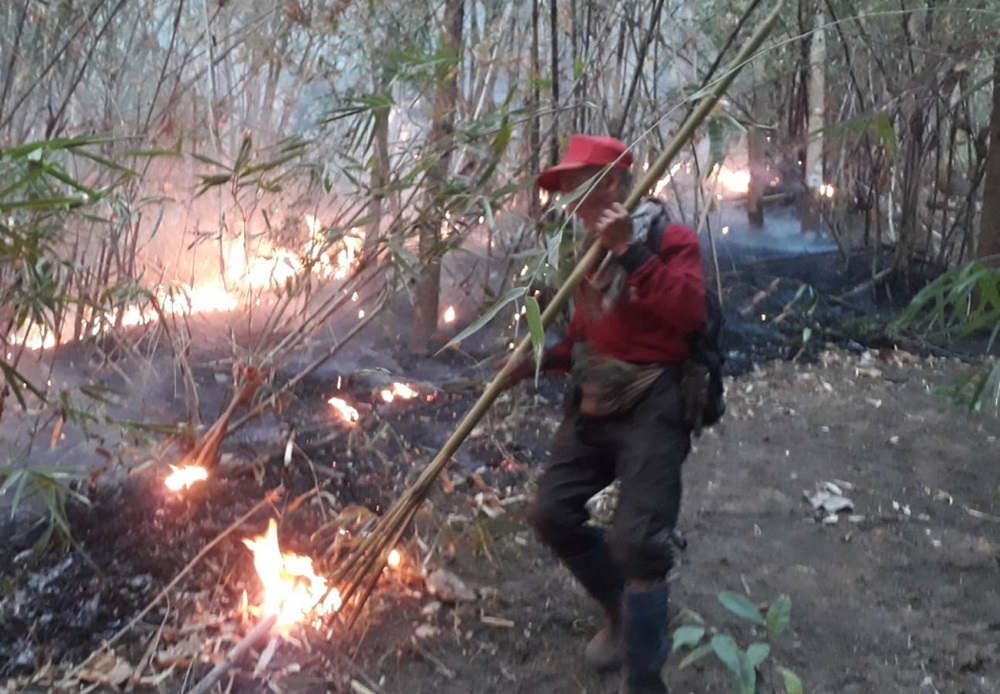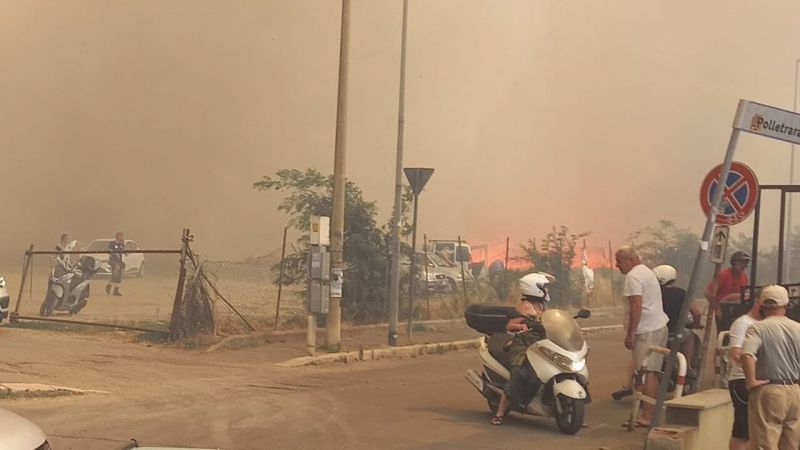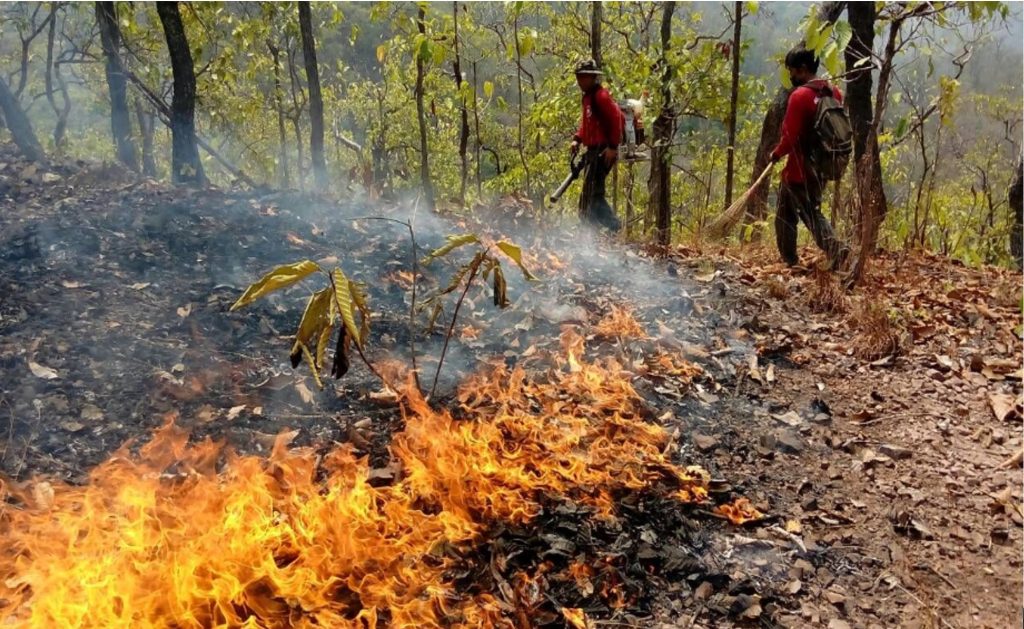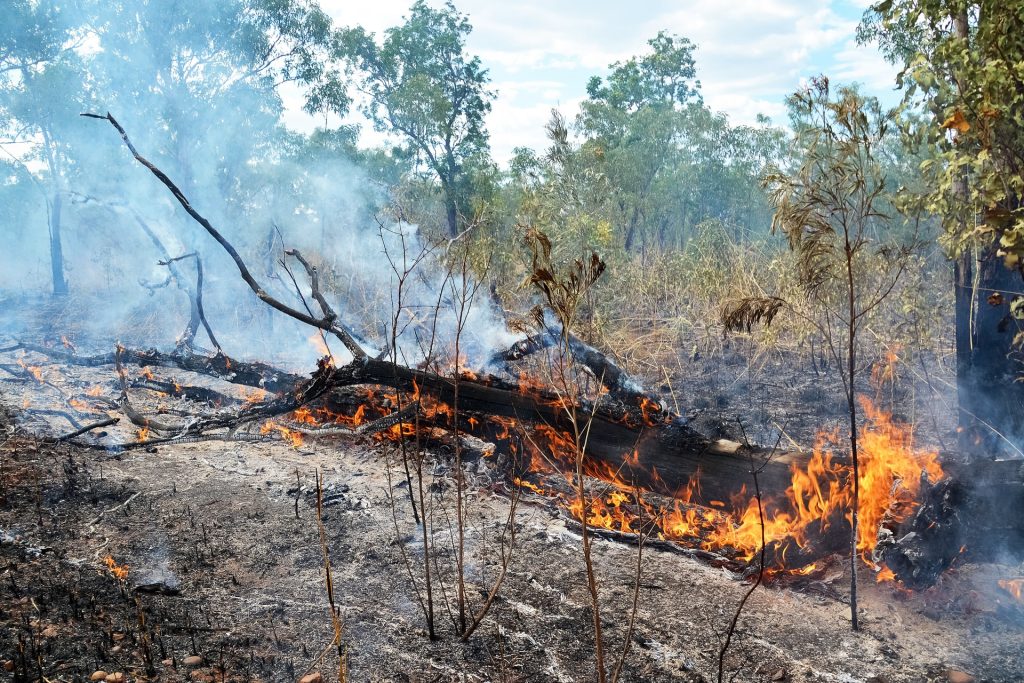On Sunday, national park officials continued to combat what appeared to be never-ending forest fires in Chiang Mai’s lower districts, blaming local villagers for setting fires because they mistakenly believed they were beneficial to vegetation.
Park personnel from the 16th protected area administration office, backed up by a Kamov KA-32 helicopter, were still battling flames in woods straddling Mae Wang, Hot, and Mae Chaem districts.
The fires began almost simultaneously, in certain regions, when the office declared on February 27 that it had successfully halted fires in the Ob Luang National Park in Hot District.
According to Kritsayam Kongsatree, chief of the 16th office, local villagers would continue to start forest fires because they have an old belief that wild edible plants and mushrooms will thrive following the fire. In several situations, he stated that fires spread from farmlands when residents burned byproducts or weeds.
According to the Pollution Control Department’s air quality monitoring agency, AIR4Thai, the ongoing forest fires have harmed Chiang Mai’s air quality, with levels of PM2.5 ultra-fine pollutants exceeding the permissible threshold of 37.5 micrograms per cubic metre of air.
According to the website, all six air quality monitoring stations in Chiang Mai reported PM2.5 levels over the green standard of 37.5 ug/m3. The Tambon Wat Sriphum station recorded a reading of 45.5 ug/m3.
On Sunday morning, the provincial administration reported 134 hotspots in 14 of Chiang Mai’s 25 districts, with 36 hotspots in Mae Chaem. Hot district had the second-highest number of hotspots, 22.
According to the 16th protected area administration office, forest fires have been burning in Mae Chaem for several days, causing damage to national forest reserves and the Mae Tho National Park.
Kritsayam stated that he had asked his employees to create fire buffer zones around the expanding fires and then fight the cordoned areas to try to halt their progress. He stated that his office had also requested assistance from the Third Army Area to deploy paratroopers to monitor woodlands and prevent locals from starting new fires.
On Saturday, Move Forward Party chairman Chaithawat Tulathon led a team to the Mae Wang area of Chiang Mai to operate a drone to monitor raging forest fires in the Ob Khan National Park. Chaithawat then used video feeds from his team’s drone to assist firefighters in planning fire buffer zones in an attempt to contain the spread.
He and his colleagues then went to Wat Phra That Doi Sai in Ban Nong Sai village, Tambon Pasak, Mueang district, Lamphun province, to help people establish fire buffer zones to stop raging forest fires.
Wildfires are an annual occurrence in northern Thailand, particularly in Chiang Rai and Chiang Mai. These disastrous catastrophes occur at an alarming rate, damaging enormous tracts of valuable forest land each year.
The peak fire season normally begins in late February and lasts about ten weeks, heightening the urgency of addressing this serious issue.
The causes of these wildfires range from natural elements like dry weather to human actions like agricultural burning and land clearing.
As a result, the effects on the ecosystem, wildlife, and local residents are significant. Fires destroyed about 120,000 Rai of land in northern Thailand in 2020 alone, emphasizing the importance of proper management measures.
Efforts to combat these wildfires have become critical to protecting the region’s biodiversity and reducing air pollution, which impacts millions.
With initiatives such as the development of firefighting applications and increasing awareness campaigns, addressing and managing wildfires has become critical to maintaining the natural balance and the well-being of persons living in northern Thailand.
Human activities contribute significantly to the region’s wildfires. Slash-and-burn agriculture, a historic farming technique, entails clearing land by burning vegetation.
While this technique has been culturally significant for ages, dry circumstances and the widespread usage of fire can result in uncontrolled wildfires.
Managing these practices in a sustainable manner presents a complicated task, requiring a careful balance of local community demands and environmental conservation initiatives. Finding strategies to reduce the risk of wildfires while also maintaining livelihoods remains a critical priority for officials in Chiang Rai and Chiang Mai.
Keywords: airport chiang mai, things to do in chiang mai, chiang mai things to do
Chiang Mai Thailand Hits the Top 10 Most Polluted Cities









